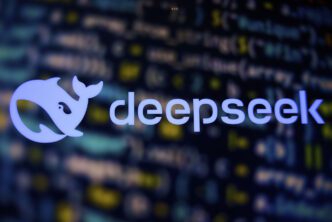A recent report by McKinsey reveals that 75% of large enterprises are investing in digital twin technology to scale their AI capabilities. By combining digital twins with generative AI. Organizations can significantly improve real-time monitoring, enhance large language model (LLM) performance, and unlock new business and operational possibilities.
What Are Digital Twins?
Originally designed to aid in engineering complex machines, digital twins have evolved into real-time monitoring tools for dynamic systems. These virtual models process telemetry data from physical assets, detect changes in conditions. And provide operational teams with real-time situational awareness.
Modern digital twins, powered by in-memory computing, deliver instant alerts and support proactive decision-making. In addition to real-time insights, they can simulate complex systems—such as airline operations or logistics chains—using predictive analytics to improve strategic planning.
Integrating generative AI with digital twins opens new frontiers for both technologies. While generative AI enhances the analytical depth of digital twins, the real-time data from digital twins helps keep AI grounded, improving accuracy and reducing hallucinations.
This dual approach empowers systems to monitor vast data streams, detect anomalies, and offer actionable recommendations based on the most current data—a method known as retrieval-augmented generation (RAG).
Detecting Anomalies Before They Disrupt Operations
For organizations operating complex infrastructure—such as public transit networks, cybersecurity frameworks, or smart cities—real-time visibility is crucial. A delayed response to anomalies can escalate small issues into significant disruptions.
Digital twins, enhanced with generative AI, continuously analyse operational data to detect irregular patterns as they emerge. This proactive capability enables teams to mitigate disruptions early and uncover hidden opportunities for operational improvements, leading to better resource utilization and efficiency gains.
As systems grow in complexity, decision-makers need intuitive ways to interact with vast datasets. Generative AI enables natural language-driven data exploration—users can simply describe their query, and AI delivers clear visualizations and insights instantly.
This removes technical barriers, making high-volume data accessible and actionable for non-technical users. By simplifying the path from data to insight, businesses can drive faster, more informed decisions with strategic impact.
Machine Learning Meets Real-Time Data Streams
Digital twins excel at tracking vast numbers of real-time data streams, and when combined with machine learning (ML), they can spot subtle issues that traditional rule-based systems might miss. These ML models are trained using real operational data to detect anomalies, generating immediate alerts.
However, as live conditions evolve, ML algorithms can face unfamiliar patterns. Without adaptation, this could lead to missed detections or false positives. Automatic retraining solves this problem—ML models update continuously with fresh data, improving accuracy over time. Digital twins work collaboratively to identify when ML outputs are unreliable and generate improved training sets, ensuring consistent, accurate insights.
Integrating digital twins with generative AI and self-improving ML offers a transformative approach to real-time monitoring. This triad empowers organizations to stay agile, react quickly to operational changes, and achieve higher levels of autonomy in decision-making.
ScaleOut Software is at the forefront of this evolution with the release of Digital Twins™ Version 4. This latest version incorporates OpenAI-powered generative AI and automatic ML retraining, pushing the boundaries of what’s possible in real-time, intelligent monitoring.













